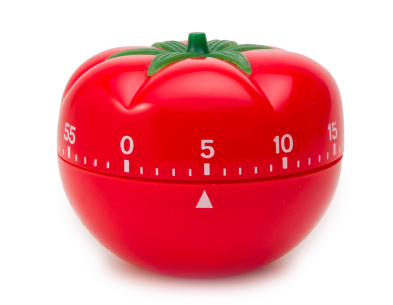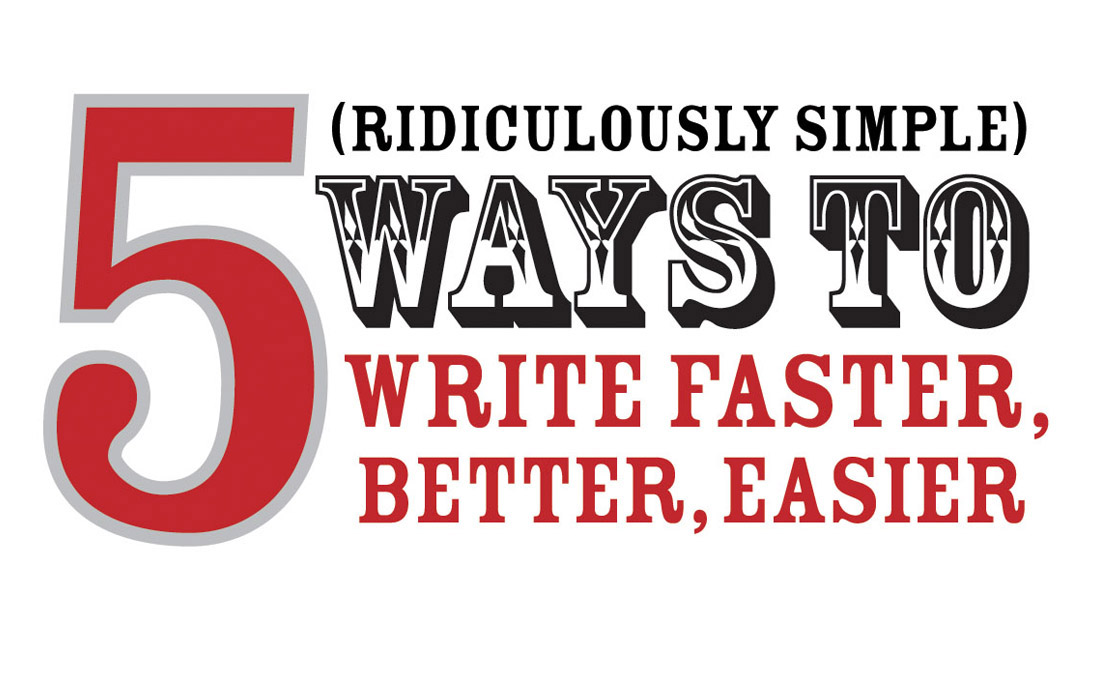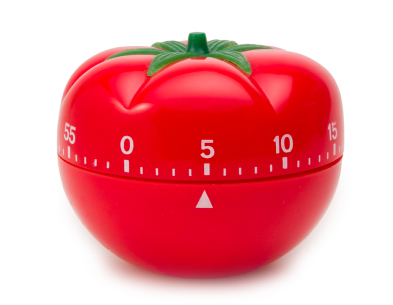How to Conquer the World (25 Minutes at a Time) Part 2
 Tuesday, February 22, 2011 at 05:15PM
Tuesday, February 22, 2011 at 05:15PM 
In Part 1 of the Pomodoro Technique, we talked about the benefits of working on your projects in short, highly focused “sprints.” In Part 2, I’ll share the basics of the technique to see if it’s something you want to explore a bit further on your own.
How do you get started with the Pomodoro Technique?
Getting started isn’t hard at all– in fact, it’s so simple kids can even use it.
All you need is:
1. A pen
2. Paper
3. A timer (kitchen timer or a stopwatch, etc.)
(I’ll over-simplify the process so you get the idea. The free e-book goes into much further details.)
1. Grab some paper. Label it “Activity Inventory.”
This is just like your master “to-do” list. Take a few minutes to write down everything you want to do for today, tomorrow, next week or even next year. Just get it all out of your head.
2. Grab another sheet of paper and title it “To Do Today.”
Look at your “Activity Inventory” and select one or a few things you’d like to accomplish today. You may not be able to finish your project(s); that’s okay. Over time, you’ll learn to evaluate how much time your projects really need. For now, just pick a few projects you’d like to chip away at.
3. Set the timer for 25 minutes. And go!
You now have 25 minutes of dedicated, intense, focused work. If your timer makes a sound, you may find the sound sends a subconscious signal that it’s time to get to work. You may find it too distracting. Find what works for you and stick with it.
4. When the timer goes off, stop!
Then take a 3-5 minute break. Get up, walk around, clean up the kitchen, whatever. Don’t start anything too intensive if you’re about to tackle another 25-minute session.
Each pomodoro is 25 minutes (or whatever you choose)
After each pomodoro session, take a 3-5 minute break. You can return to your previous work or you can start a new project for another 25-minute pomodoro session.
You can plan your day to accomplish one, three or ten pomodoros. It’s totally up to you and your goals for the day (and beyond).
What about interruptions?
Ideally, during a pomodoro session we don’t want interruptions. Of course, that’s living in a dream world. Interruptions are bound to happen.
So what do we do when we get interrupted? The technique handles interruptions by first dividing them into two categories:
• Internal interruptions
• External interruptions
Internal interruptions
We all have internal interruptions while working. We’re thinking of other things to do when we finish our task. When these thoughts arise and distract us, take a second to mark the idea down on your “To Do Today” list. If it’s an activity for another day, write it on your “Activity Inventory” list. Return to your session and continue working. The idea is to write it down so you don’t forget. Then quickly return to your session.
External interruptions
You can handle external interruptions by telling people you’re busy now and you’ll get back to them at a certain time. Then write down your commitment so you don’t forget. Return to your session.
This sounds ridiculously simple
Time management is meant to be complicated, right? With lots of rules, do’s and don’t’s.
Simplicity is the Pomodoro Technique’s strength
When I first read about this technique, I dismissed it. But later in the day, this nagging thought kept haunting me; hmm, maybe this thing is worth exploring. I’m glad I checked it out.
Boosting productivity
I don’t think I’ve ever been this productive. I use it consistently for most writing projects. For example, if a project is fairly large, then maybe I’ll commit to three pomodoro sessions a day to that project. Then maybe I’ll commit to two sessions for another project and one for a third project.
That’s seven, 25-minute highly focused writing sessions. You’ll be surprised how much you’ll accomplish in just 3.5 hours of highly focused, uninterrupted work.
Hey, you may not be using sprints to boost your running performance
But you can use “sprints” to tackle time in a way that boosts your creativity and productivity. in ways that make you feel like you’re conquering the world.
Several (free) things to get you started
Check out the Pomodoro website. They have some really cool items you don’t want to miss:
1. An e-book detailing the entire process.
2. Downloadable sheets: The Pomodoro “Cheat Sheet,” the “Activity Inventory” sheet and the “To Do Today” sheet.
The free e-book is also available in a paperback edition (amazon affiliate link).
I bought the “Pomodoro Technique Illustrated” book (amazon affiliate link) and found it helpful. The book brings the technique to life in a simple and practical way.



